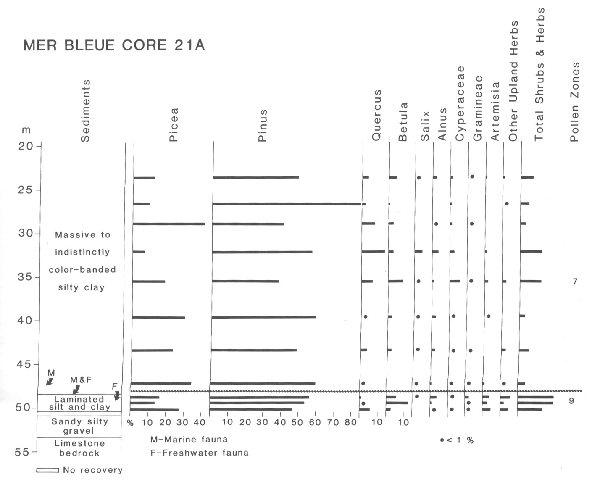HISTORY OF THE CHAMPLAIN SEA
Age of Transgression - Pollen Stratigraphy
![]()
Pollen analysis is one of the methods that has been used to determine the age of the Champlain Sea. A core was taken at Mer Bleue, a region very close to Ottawa, and its pollen record was analyzed. The core was taken at this location because its sediment and fossil records is representative of the depositional environments of an early glacial lake and the subsequent transgression of the Champlain Sea into the Ottawa-St. Lawrence Lowland. The pollen diagram for the Mer Bleue core is presented below (Anderson). The core depth (along the left-hand side) is shown in meters below the ground surface.

The relatively high Picea values in the marine sediments (massive to indistinctly color-banded silty clay) reflect the arrival of spruce-dominated vegetation at the southern margin of the Champlain Sea basin, which coincides with the invasion of the sea in the Ottawa - St. Lawrence Lowland. Also, across the contact between glaciolacustrine (laminated) clay and the marine clay, values for herb and shrub pollen decline while those for Picea rise. These observations are consistent with those taken from other core samples. From this information, it can be determined that the change from proglacial lake sedimentation to marine deposition is between approximately 11,000 and 11,500 years B.P.
![]()